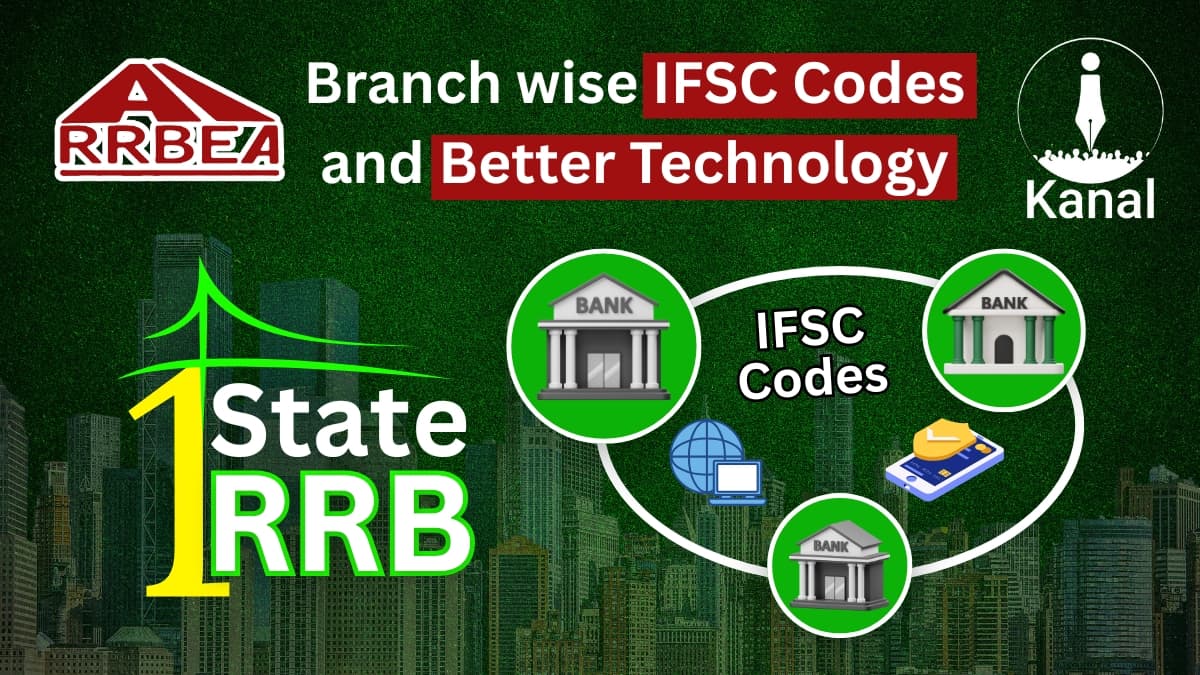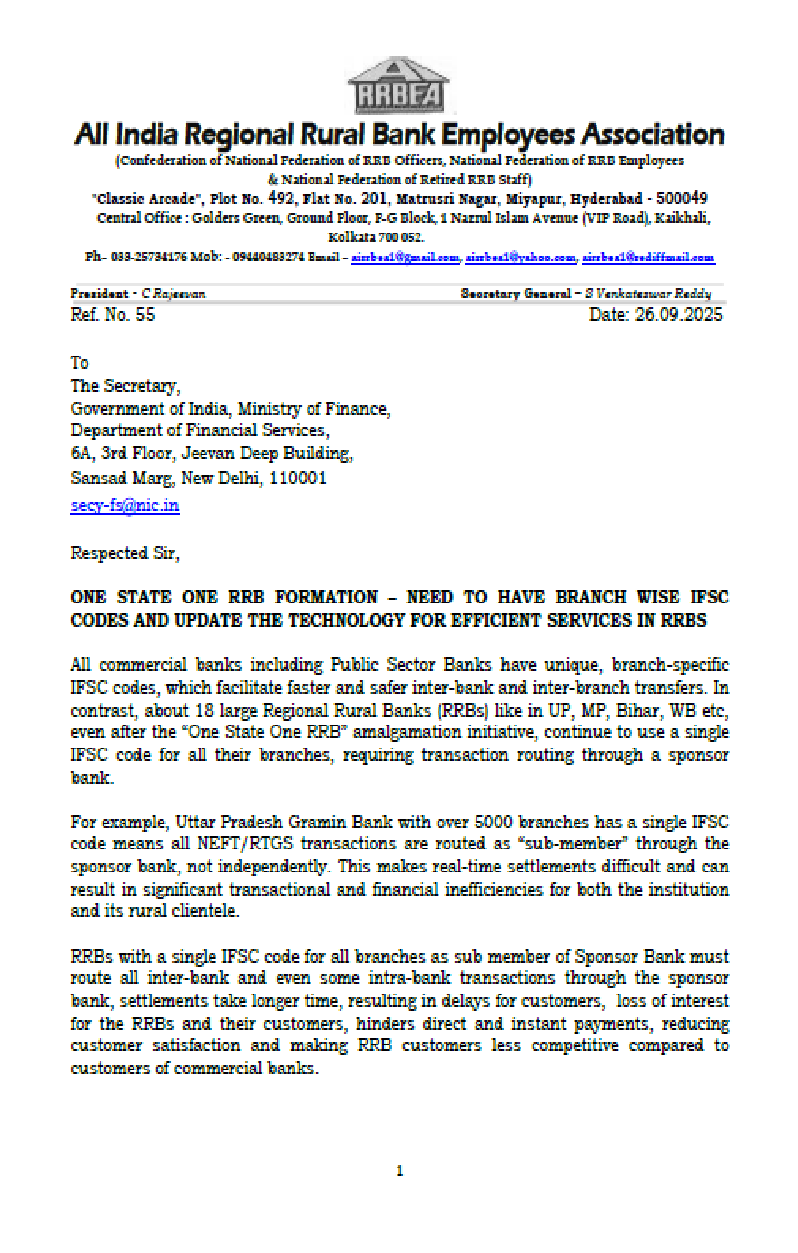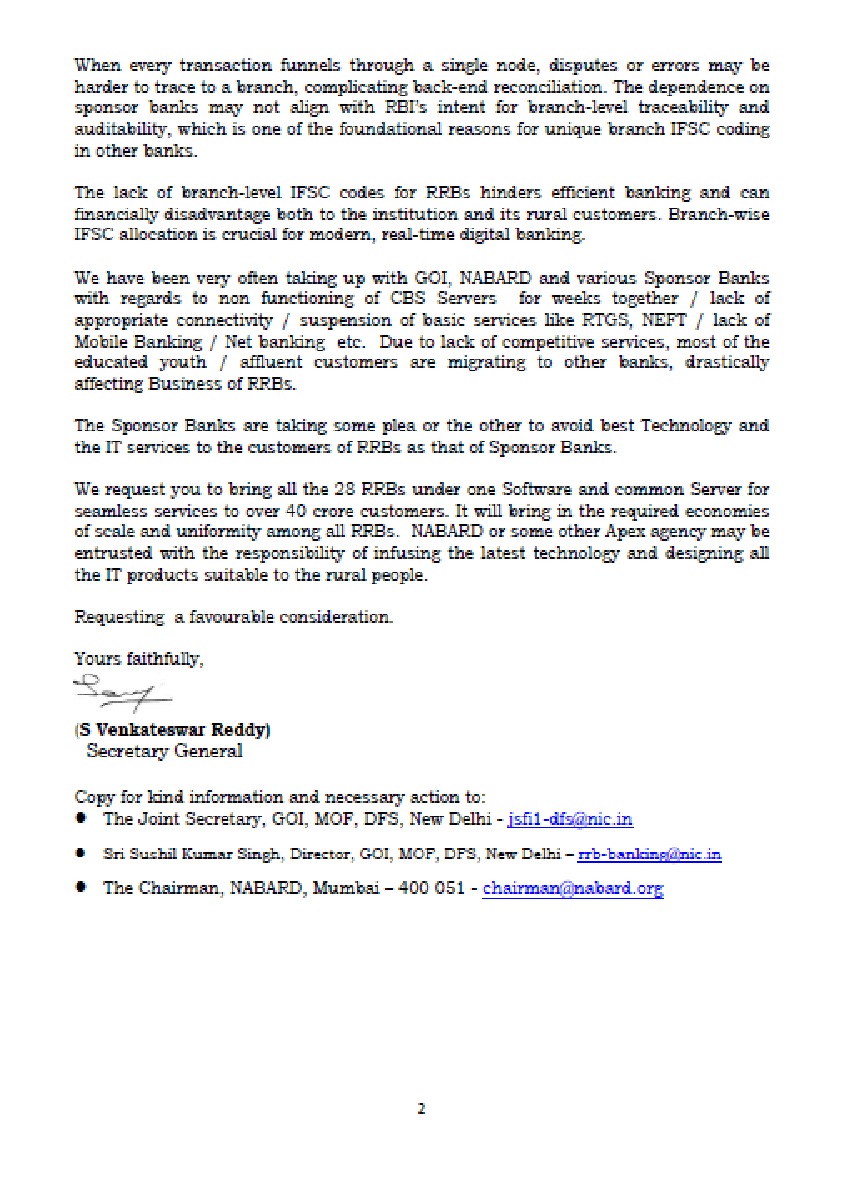One State, One RRB: AIRRBEA Call for Branch wise IFSC Code and Better Technology
The All India Regional Rural Bank Employees Association(AIRRBEA) urges the government to assign branch wise IFSC codes and improve technology across all Regional Rural Banks for smoother and faster banking services.

Author: Sruthysh
Published: October 18, 2025
The All India Regional Rural Bank Employees Association (AIRRBEA) has appealed to the Ministry of Finance to address a major issue faced by Regional Rural Banks (RRBs) after the “One State, One RRB” merger. Despite unification, several RRBs across states like Uttar Pradesh, Madhya Pradesh, Bihar, and West Bengal still use a single IFSC code for all their branches, which causes inefficiency and delays in financial transactions.

Image-AIRRBEA Letter to TheSecretary , Ministry of Finance.
Current Problem with IFSC Codes
In most commercial banks, each branch has its own unique IFSC code. This system ensures faster and more secure transactions through NEFT and RTGS. However, in many RRBs, all branches operate under one common IFSC code, meaning that every transaction whether inter bank or intra bank must pass through the sponsor bank.
For instance, the Uttar Pradesh Gramin Bank, which has over 5,000 branches, operates with just one IFSC code. As a result, all electronic transfers go through its sponsor bank rather than being processed directly. This causes delays, affects real time settlements, and makes RRB customers less competitive compared to those using other public sector banks.
Also read - One IFSC, Many Hurdles: Do Regional Rural Banks Struggle for Digital Independence?
Impact on Customers and Operations
When transactions are routed through a single point, it becomes harder to trace errors or disputes to a specific branch. This affects transparency and slows down the reconciliation process. Moreover, customers experience longer waiting times and potential financial losses due to delays in fund transfers.
The lack of individual branch codes also hinders the Reserve Bank of India’s (RBI) aim of achieving branch level traceability and auditability in the banking system. As a result, both RRBs and their rural customers face unnecessary disadvantages in the growing era of digital banking.
Technological Challenges
Apart from the IFSC issue, many RRBs struggle with poor digital infrastructure. There have been frequent cases of non-functioning CBS (Core Banking Solution) servers, weak internet connectivity, and suspension of essential services like RTGS, NEFT, mobile banking, and net banking.
These problems discourage young and educated customers, who are increasingly moving their accounts to private or public sector banks with better facilities. This migration reduces the business volume of RRBs, affecting their overall growth and sustainability.
Appeal for a Common System
The Association has suggested that all 28 RRBs be brought under one software platform and a common central server. This would make digital services smoother and more uniform for nearly 40 crore rural customers.
They also propose that NABARD or another apex agency should be made responsible for implementing modern technology and designing banking products suited to rural needs. Such a step would ensure efficiency, uniformity, and better customer satisfaction across the entire RRB network.
Path Ahead
To truly achieve the vision of “One State, One RRB”, the government must prioritise technology modernisation and branch level independence. Unique IFSC codes for each branch will enhance operational transparency, speed, and reliability. A unified digital infrastructure will help bridge the gap between urban and rural banking services, promoting inclusive growth in India’s financial system.
Advertisement
No comments yet.
